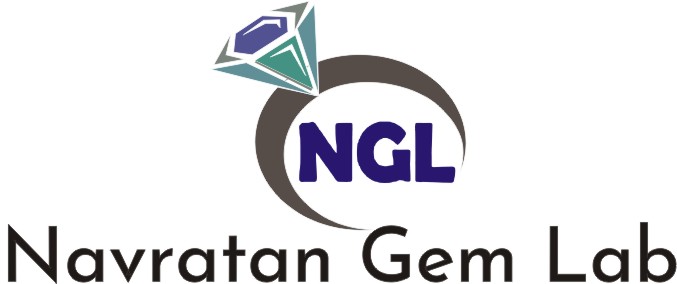Diamond
Diamond, the most famed and fabled of all gemstones, is very unique in many ways. Renowned for being the hardest substance on earth, its sparkling fire, durability, and rarity make Diamond the most prized of all gems. No gemstone contains as much allure and interest as does Diamond.
Most Diamonds used as gemstones are colorless or very faintly colored. However, colored Diamonds, known as "fancies", can be extremely rare and valuable, and the most valuable gemstones ever known have been fancy Diamonds. In fact, fancy Diamonds are the most valuable substances known to man.
| Chemical Formula | C |
| Color | Colorless, Blue, Red, Green, Yellow, Orange, Brown, Pink, Purple, Gray, Black |
| Hardness | 10 |
| Crystal System | Isometric |
| Refractive Index | 2.417 - 2.419 |
| SG | 3.1 - 3.5 |
| Transparency | Transparent to opaque |
| Double Refraction | None |
| Luster | Adamantine |
| Cleavage | 1, all sides - octahedral. Dodecahedral Diamonds and Borts exhibit poor cleavage or no cleavage at all. |
| Mineral Class | Diamond |
A grading system was implemented to evaluate Diamonds based on four aspects. These four grading systems are known as "the four C's", in which all Diamonds are evaluated:
Color
Cut
Clarity
Carat weight
Color:
The color of a Diamond is graded on an alphabetical scale ranging from the letters D to Y. This scale measures the color saturation, ranging from absolutely colorless to deep yellow (or yellow-brown). D is totally colorless, without a hint of any other color. Y indicates an intense deep yellow or deep yellow-brown. The letters between D and Y describe the color, depending on the amount of yellow saturation. The color bar below depicts the letter and the color saturation it represents. (The bar is not limited to yellow; it may also be yellow-brown, and is not necessarily accurate as monitor saturation may vary.) The letter Z in the color grade of a Diamond may sometimes be used to indicate a fancy Diamond.


Cut:
The cut, or facet of the Diamond, is the shape and style in which it is cut. The most prevalent cut is the brilliant cut, a facet specially designed to bring out the most fire in the stone. Sometimes this cut cannot be given, either because of flaws or cleavage habits. Much planning must be taken before cutting a Diamond, as a slight error in the facet may significantly decrease the value of the stone.
Clarity:
Clarity is graded on the size and visibility of the flaws and inclusions. Letters are assigned to a stone to label the quality of its clarity:
| IF | Internally Flawless | Contains no flaws or inclusions at a magnification of 10x |
| VVS1 | Very, very small inclusions | Contains very tiny flaws or inclusions visible at 10x magnification |
| VVS2 | Very, very small inclusions | Contains tiny flaws or inclusions visible at 10x magnification |
| VS1 | Very small inclusions | Contains small flaws or inclusions visible at 10x magnification |
| VS2 | Very small inclusions | Contains flaws or inclusions visible at 10x magnification |
| SI1 | Small inclusions | Contains larger flaws or inclusions visible at 10x magnification |
| SI2 | Small inclusions | Contains larger flaws or inclusions easily visible at 10x magnification |
| I1 | Inclusions | Contains inclusions visible to the naked eye |
| I2 | Inclusions | Contains large inclusions visible to the naked eye |
| I3 | Inclusions | Contains very large inclusions visible to the naked eye |
Carat Weight:
The size of a Diamond is measured in carats (abbreviated as ct). A carat is equivalent to 0.2 grams (about 0.007 ounces). Another weight measurement sometimes used for small for Diamonds is the point measurement (abbreviated as pt). Each point is one/one hundredth of a carat. For example, a stone weighing 34 pt weighs .34 ct Larger Diamonds are worth more than proportionally smaller ones, meaning a 3 ct Diamond surpasses the value of three 1ct Diamonds.
Sources:
Diamond production varies year by year, for example huge quantities of Diamonds have recently been coming from Botswana, while the large deposits of Australia are no longer productive. As of 2010, the top ten Diamond producing countries, which account for over 80 percent of the worlds Diamonds, are Russia, Botswana, Congo, Angloa, South Africa, Namibia, Guinea, Ghana, Australia, and Canada (a relatively recent producer).
Similar Gemstones:
Many gemstones resemble Diamond. However, few have the adamantine luster and fire like that of Diamond, and they are all softer than Diamond. Many synthetic materials are also made to closely resemble diamond, such as YAG (Yttrium Aluminum Garnet), Strontium Titanate, Moissanite, and of course Cubic Zirconia, Diamond's main imposter. However, Diamond is distinguished from all the others by its immense hardness
